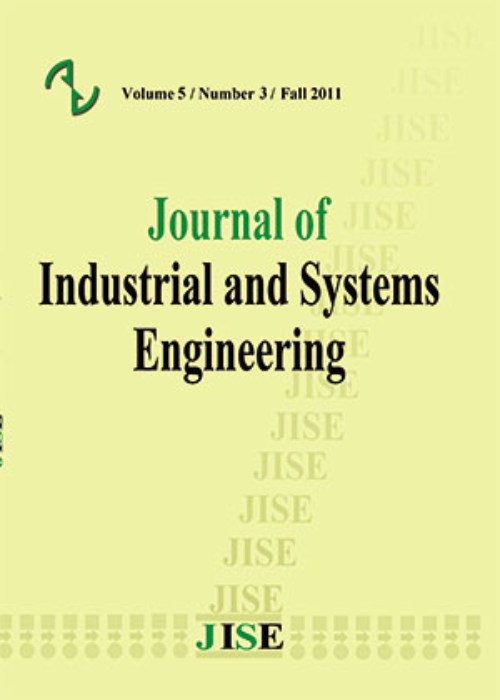فهرست مطالب
Journal of Industrial and Systems Engineering
Volume:4 Issue: 2, Summer 2010
- تاریخ انتشار: 1389/06/01
- تعداد عناوین: 4
-
-
Page 77Contour Crafting is an emerging technology that uses robotics to construct free form building structures by repeatedly laying down layers of material such as concrete. The Contour Crafting technology scales up automated additive fabrication from building small industrial parts to constructing buildings. Tool path planning and optimization for Contour Crafting benefit the technology by increasing the efficiency of construction especially for complicated structures. The research reported here has aimed at providing a systematic solution for improving the overall system efficiency and realizing the Contour Crafting technology for building customdesigned houses. In the Part I of this paper an approach is presented to find the optimal tool path for the single nozzle Contour Crafting system incorporating the physical constraints of the technology and construction considerations. In Part II several algorithms are presented for finding the collision-free tool path for multiple machine configurations based on the single nozzle approach. The multiple machine configurations of Contour Crafting are ideal for rapidly constructing multiple adjacent structures or a large single structure because all machine modules can work in parallel to concurrently fabricate various structural parts.
-
Page 95The main contribution of this work lies in challenging the common practice of inferential statistics in the realm of simple linear regression for attaining a higher degree of accuracy when multiple observations are available, at least, at one level of the regressor variable. We derive sufficient conditions under which one can improve the accuracy of the interval estimations at quite affordable extra computational cost. Two algorithms and a numerical example will be presented to fully explain how our approach works and to compare the results of our approach versus the results obtained from three of the well known statistical software systems.
-
Page 114In the various fields of disaster management, choosing the best location for the Emergency Support & Supply Service Centers (ESSSCs) and the survivability of the network that provides the links between ESSSCs and their environment has a great role to be paid enough attention. This paper introduces a graph based model to measure the survivability of the linking's network. By values computed for time and cost of recovery of link failures, the proposed locations for ESSSCs can be ranked. By considering the conflicts that can be arise between maximizing the survivability of the network and minimizing the time and cost of recovery of link failures, an algorithm is proposed that use a Simple Additive Weighting (SAW) Method. A numerical example is provided and solved to illustrate how the algorithm works. Having solved the problem with different weighting vectors, a discussion is made on the sensitivity analysis of the solution.
-
Page 125Supplier selection and material procurement planning are the most important issues in supply chain management. This decision is complicated when the buyers face with discount price schemes. In real situation, each supplier may apply different methods such as different types of discount schedules and various types of payment in order to increase market share. In this situation, buyers try to select the best supplier/s by considering all tangible and intangible factors which may be included in this decision problem. Mohammad Ebrahim and Razmi (2009) introduced a Meta heuristic model in order to select the best suppliers and determine theprocurement plan under two types of discount offers. In this paper, a fuzzy bi-objective model is proposed for single item single period supplier selection and purchasing problem under capacity constraint, supply uncertainty and budget limitation. This model includes different kinds of discount (all-unit discount, incremental discount). In addition, different methods for payments which ordinary may be proposed by each supplier are considered in this model. Finally, an interactive fuzzy programming approach (TH method), -constraint method and reservation level driven Tchebycheff procedure (RLTP) are applied to solve this bi objective model. The efficiency of each method is evaluated by using an additive utility function which is offered by decision maker.


